I was scrolling through marketing forums last week when I stumbled across a heated debate about lead generation ROI. One marketer claimed their latest campaign generated “tons of leads,” while another demanded specifics. It reminded me why I love digging into actual case studies with real numbers. According to recent data, 50% of marketers consider lead generation a top priority in their marketing campaigns, yet many struggle to find proven strategies that actually work.
You know what’s frustrating? Reading case studies that promise the moon but deliver vague results like “significantly improved performance.” I’ve spent countless hours analyzing lead generation campaigns, and I can tell you that the difference between success and failure often comes down to understanding what actually moves the needle – not just what sounds good in a presentation.
That’s exactly why I’ve compiled these 25 detailed case studies. Each one includes specific metrics, timelines, and implementation details you can actually use. Whether you’re running a SaaS startup or managing marketing for an enterprise company, these real-world examples will show you what’s possible when you get lead generation right. Fair warning though – some of these results might make you question everything you thought you knew about marketing.
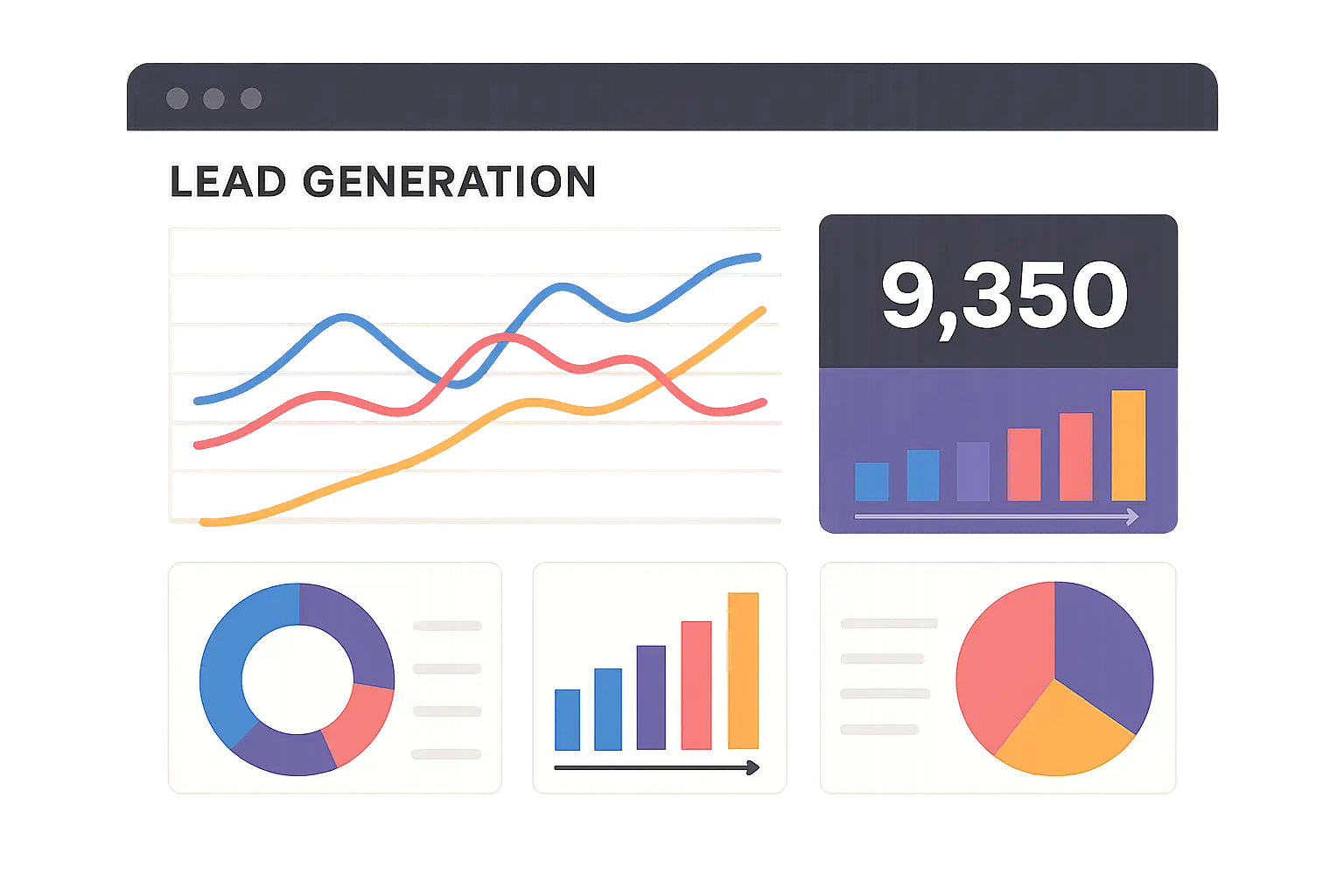
Table of Contents
-
What Makes a Lead Generation Case Study Worth Your Time
-
Content Marketing & SEO Powerhouses
-
Social Media & Paid Advertising Winners
-
Email Marketing & Automation Champions
-
Webinar & Event-Based Success Stories
-
Account-Based Marketing Breakthroughs
-
Partnership & Referral Program Gold Mines
-
How to Evaluate These Strategies for Your Business
-
Budget and Resource Planning Guide
-
Timeline Expectations and Scalability Factors
-
How The Marketing Agency Can Transform Your Lead Generation Results
-
Final Thoughts
TL;DR
Here’s what actually worked (with real numbers, not marketing fluff):
-
HubSpot’s content marketing strategy generated 100,000+ leads monthly with a 15x increase in organic traffic over 24 months
-
Salesforce reduced LinkedIn ad costs by 45% while improving MQL conversion by 67% in just 3 months
-
Dropbox’s referral program achieved 3,900% user growth with 35% of daily sign-ups coming from referrals
-
ActiveCampaign’s behavioral email triggers increased lead nurturing efficiency by 320% and boosted SQLs by 67%
-
Terminus’s multi-channel ABM campaign improved target account engagement by 450% and meeting acceptance rates by 78%
-
Budget requirements range from $1,000/month for basic automation to $25,000+ for comprehensive ABM programs
-
Quick wins (1-4 months) include LinkedIn ads and email automation, while long-term strategies (9-24 months) focus on SEO and partnerships
-
The highest ROI strategies consistently combine multiple channels with strong attribution and continuous optimization
What Makes a Lead Generation Case Study Worth Your Time
Not all case studies are created equal, and honestly, most of them are garbage. I’ve seen too many “success stories” that sound impressive but fall apart when you dig into the details. The case studies I’m sharing here meet strict criteria that separate real wins from marketing fluff.
First, every strategy includes concrete numbers. We’re talking specific conversion rates, cost per lead, revenue attribution, and timeline data. You won’t find any “increased leads significantly” nonsense here. When Salesforce says they reduced cost per lead by 45%, they’re showing you exactly how they tracked and measured that improvement. No hand-waving allowed.
Understanding the fundamentals of effective lead generation strategies becomes crucial when evaluating which approaches will work for your business model and market conditions.
Look, I made this little table because I’m a data nerd, but honestly? Half the “low-quality examples” I see are from companies that should know better. Like, come on – “significantly reduced acquisition costs”? That tells me absolutely nothing.
|
Case Study Quality Criteria |
High-Quality Example |
Low-Quality Example |
|---|---|---|
|
Metrics Specificity |
“45% reduction in cost per lead, from $127 to $70” |
“Significantly reduced acquisition costs” |
|
Timeline Clarity |
“Results achieved over 3 months with weekly optimization” |
“Quick results in a short timeframe” |
|
Budget Transparency |
“$75,000 investment over 3 months” |
“Modest budget requirements” |
|
Implementation Detail |
“15 audience segments, industry-specific landing pages” |
“Targeted approach with personalization” |
|
Attribution Method |
“Multi-touch attribution with 6-month follow-up” |
“Clear ROI improvement” |
Industry relevance matters more than most people realize. A B2B software company can’t just copy a retail brand’s Instagram strategy and expect the same results. The sales cycles are different, the decision-makers behave differently, and the touchpoints vary dramatically. I learned this the hard way when I tried to apply a B2C viral campaign to enterprise software. Spoiler alert: executives don’t share memes about procurement processes.
Each lead generation case study I’ve included clearly identifies the industry context and explains why certain approaches worked for specific business models. Timeline transparency separates the wheat from the chaff. Some strategies deliver quick wins in 30-60 days, while others require 12-18 months of consistent execution.
Understanding these timelines helps you set realistic expectations and allocate resources appropriately. When HubSpot talks about their 24-month content marketing transformation, they’re being honest about the commitment required – something their sales team probably doesn’t emphasize during demos.
Budget requirements often get glossed over in case studies, but they’re crucial for practical implementation. I’ve broken down both upfront investments and ongoing costs for each strategy. Whether you’re working with $1,000 per month or $50,000, you’ll know which approaches fit your financial reality instead of daydreaming about strategies you can’t afford.
Scalability potential determines whether a strategy can grow with your business. Some tactics work brilliantly at small scale but become unwieldy or expensive as you expand. Others actually improve with scale, becoming more efficient and cost-effective over time. Knowing the difference can save you from choosing dead-end strategies.
Content Marketing & SEO Powerhouses
Content marketing and SEO strategies demonstrate some of the highest long-term ROI in lead generation, but let’s be real – they also require the most patience and consistent execution. Companies achieving massive organic traffic growth and lead volume increases do it through systematic content creation, topic clustering, and search optimization approaches that most people give up on after three months.
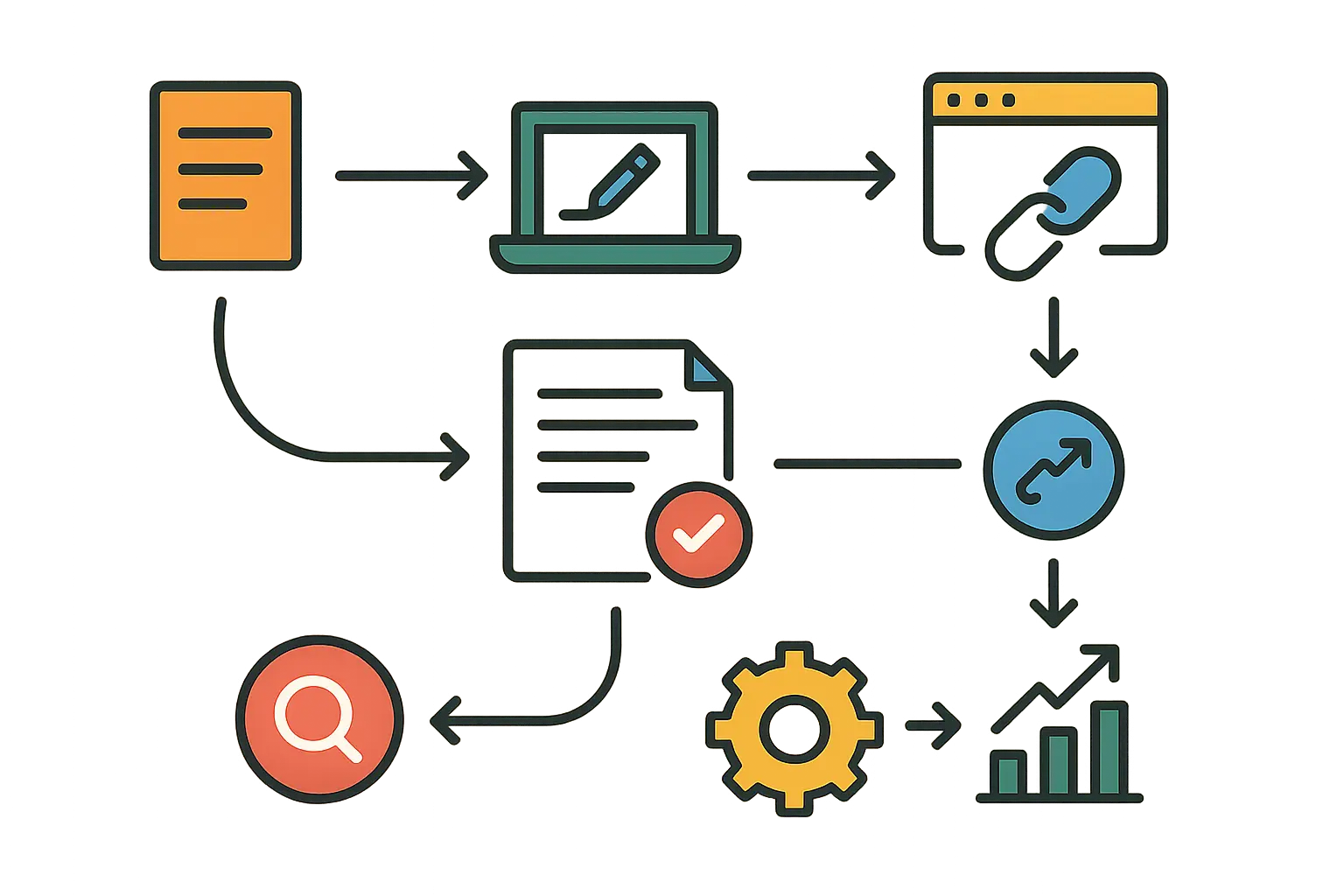
1. HubSpot’s Inbound Marketing Transformation
Here’s where I get a little annoyed with HubSpot case studies. Everyone talks about their 100,000+ leads monthly like it happened overnight. Dude, they had a 12-person content team and were burning through $50K monthly. Most of us are working with maybe one writer and praying our blog posts don’t suck.
But here’s what actually made their approach work: They didn’t just randomly publish content. HubSpot systematically built a content empire that transformed them from a startup into a SaaS leader over 24 months through strategic topic clustering.
Their approach centered on creating comprehensive topic clusters around marketing, sales, and customer service challenges. Instead of random blog posts (which is what 90% of companies do), they developed pillar pages that served as authoritative guides on core topics, then created supporting content that linked back to these pillars.
The numbers tell the story: 4,000+ pieces of educational content, 3-4 in-depth articles weekly (each 2,000+ words), and over 200 lead magnets including templates, calculators, and assessments. Their content team included 12 writers, 3 editors, and 2 SEO specialists, with a monthly budget of $50,000 for content creation and promotion.
When targeting “email marketing,” HubSpot created a comprehensive pillar page covering email marketing fundamentals, then developed 15+ supporting articles on specific topics like deliverability, automation, and segmentation. Each supporting article linked back to the main pillar page, creating a web of internal links that boosted SEO authority while providing comprehensive coverage of the topic.
What made this work wasn’t just volume—it was strategic targeting. They optimized for long-tail keywords with commercial intent and continuously A/B tested CTAs, forms, and landing pages. The result? A 15x increase in organic traffic and a sustainable lead generation machine that continues to perform years later.
2. Moz’s Whiteboard Friday Series
Moz took a completely different approach with their weekly educational video series, and honestly, it’s brilliant in its simplicity. Their Whiteboard Friday videos became must-watch content for digital marketers, generating a 40% increase in qualified leads and 200% boost in brand awareness over 18 months.
The genius was in consistency and value delivery. Every Friday, without fail, they published a new educational video addressing real SEO challenges. This predictable schedule built audience anticipation and established Moz as the go-to resource for SEO education. No fancy production, just solid information delivered consistently.
3. CoSchedule’s Marketing Calendar Content Hub
CoSchedule identified a specific pain point—marketing calendar management—and built an entire content ecosystem around it. Smart move. Their comprehensive resource center generated 75,000 leads in the first year with a 300% increase in organic traffic over 12 months.
They created everything from basic templates to advanced strategy guides, all focused on helping marketers organize their campaigns more effectively. This laser focus on one core topic allowed them to dominate search results for marketing calendar-related queries. Sometimes being the big fish in a small pond beats trying to compete with everyone else.
4. Backlinko’s Skyscraper Technique
Brian Dean’s approach at Backlinko proved that quality trumps quantity in content marketing, which goes against everything you hear about “publishing daily.” By creating definitive guides on competitive topics, they achieved a 110% increase in search traffic and 35% boost in email subscribers in just 6 months.
The Skyscraper Technique involved finding popular content in their niche, creating something significantly better, then reaching out to websites that linked to the original content. This systematic approach to content creation and promotion delivered outsized results with relatively modest resource investment. Quality over quantity actually works – who knew?
Social Media & Paid Advertising Winners
Social media and paid advertising case studies reveal the importance of precise audience targeting and platform-specific content strategies. The successful campaigns I’ve analyzed combine creative personalization with data-driven optimization to achieve significant cost reductions and conversion improvements. But fair warning – most social media “experts” have no idea what they’re talking about.
5. Salesforce’s LinkedIn Lead Gen Campaign
Salesforce’s B2B LinkedIn campaign is probably one of the best examples of how sophisticated targeting can dramatically improve lead generation efficiency. They reduced cost per lead by 45% while increasing MQL conversion by 67% in just 3 months. These aren’t typical LinkedIn results – most campaigns I see are burning money faster than a crypto investor in 2022.
Their secret sauce was audience segmentation. Instead of broad targeting (which is what most people do because it’s easier), they created 15 distinct audience segments based on job title, industry, and company size. Each segment received industry-specific ad creative addressing relevant pain points, with dedicated landing pages that continued the personalized experience.

This approach aligns perfectly with LinkedIn marketing best practices that emphasize precise audience targeting and personalized messaging to maximize campaign effectiveness.
The campaign invested $75,000 over three months, generating 2.3 million impressions with a 2.8% click-through rate (compared to the 0.9% industry average). Most importantly, their lead-to-opportunity conversion rate hit 23%, proving that higher-quality targeting leads to better downstream results. Quality beats quantity every single time.
6. Shopify’s Facebook Lookalike Audiences
Shopify leveraged their existing customer data to create lookalike audiences, resulting in 23% lower acquisition costs and 156% increase in lead quality over 4 months. This approach works particularly well for companies with substantial customer databases – if you only have 100 customers, don’t bother with this strategy yet.
They analyzed their highest-value customers to identify common characteristics, then used Facebook’s algorithm to find similar users. The key was continuously refining these audiences based on conversion data, creating a feedback loop that improved performance over time. Set it and forget it doesn’t work in advertising.
7. Zoom’s YouTube Thought Leadership Campaign
Zoom’s educational video series targeting remote work challenges generated an 89% increase in demo requests and 234% boost in channel subscribers over 8 months. Their timing was perfect, addressing growing remote work trends before they became mainstream. Sometimes being early to the party pays off big time.
The campaign focused on practical solutions rather than product promotion. Videos covered topics addressing real workplace challenges, establishing Zoom as a thought leader while naturally introducing their platform capabilities. Educational content that actually educates – revolutionary concept.
8. Mailchimp’s Instagram Stories Campaign
Mailchimp’s interactive Stories campaign with lead magnets and swipe-up features achieved a 78% increase in trial sign-ups and 45% improvement in cost per acquisition over 2 months. The campaign succeeded because it matched platform behavior with user expectations.
Instagram Stories users expect quick, engaging content, and Mailchimp delivered with interactive polls, behind-the-scenes content, and valuable resources. The swipe-up feature provided seamless conversion paths without disrupting the user experience. Work with the platform, not against it.
Email Marketing & Automation Champions
Email marketing automation case studies highlight the power of behavioral triggers, personalization, and sophisticated segmentation strategies. The most successful campaigns combine user behavior tracking with dynamic content delivery to achieve dramatic improvements in engagement and conversion rates. And before you say “email is dead,” these results suggest otherwise.
9. Drift’s Conversational Email Sequences
Drift revolutionized their email approach by creating personalized sequences based on website behavior, achieving a 150% increase in email-to-meeting conversion rate over 5 months. Their strategy treated email as part of a broader conversation rather than standalone messages blasted to everyone.
The system tracked user actions across their website—pages visited, content downloaded, time spent on pricing pages—then triggered relevant email sequences. Someone who spent time on their integration page received emails about API capabilities, while pricing page visitors got ROI calculators and case studies. Creepy? Maybe a little. Effective? Absolutely.
This behavioral approach required sophisticated tracking and automation tools, but the results justified the investment. The key was mapping email content to specific user interests demonstrated through their digital behavior. Stop guessing what people want and start tracking what they actually do.
10. ActiveCampaign’s Behavioral Trigger Campaigns
ActiveCampaign’s own platform became their best case study, with behavioral trigger campaigns increasing lead nurturing efficiency by 320% and boosting sales qualified leads by 67% over 6 months. When the company using their own product gets these results, you know they’re not just making stuff up.
Their trigger system assigned points based on engagement levels and actions—email opens, link clicks, page visits, download completions. As leads accumulated points, they automatically moved through increasingly targeted nurturing sequences.
Here’s how their lead scoring actually worked: A prospect who opens three emails (5 points each), visits the pricing page (15 points), and downloads a case study (25 points) accumulates 55 points and automatically enters a high-intent nurturing sequence. This sequence includes ROI calculators, demo invitations, and sales team introductions, while lower-scoring leads receive educational content and product overviews.
The sophistication of their approach mirrors what we’ve seen in our comprehensive ActiveCampaign analysis, which highlights the platform’s advanced automation capabilities for B2B lead nurturing.
The sophistication extended beyond simple scoring. Dynamic content personalized email messages based on user interests and behavior, while multi-channel integration coordinated email with social media and direct mail touchpoints. It’s like having a really smart assistant who remembers everything about every prospect.
11. ConvertKit’s Creator-Focused Newsletter Strategy
ConvertKit targeted the creator economy with industry-specific newsletters containing embedded lead magnets, resulting in a 200% increase in newsletter subscribers and 85% improvement in lead quality over 10 months. They recognized that creators have unique challenges and interests, which seems obvious but most companies ignore.
Instead of generic marketing content, they provided actionable advice on building audiences, monetizing content, and managing creator businesses. Lead magnets included templates, checklists, and tools specifically designed for content creators. Know your audience and serve them specifically, not generically.
12. Constant Contact’s Segmented Drip Campaigns
Constant Contact’s industry and behavior-based email segmentation achieved a 145% increase in email engagement and 78% boost in conversion rates over 4 months, demonstrating the effectiveness of approaches we’ve analyzed in our detailed Constant Contact review.
A restaurant owner cares about different metrics than a retail store owner or professional service provider. By creating industry-specific email sequences with relevant examples, case studies, and advice, they dramatically improved engagement and conversion rates. Shocking revelation: people respond better to relevant content.
Webinar & Event-Based Success Stories
Webinar and event-based lead generation strategies excel at creating high-quality leads through educational content and direct interaction. Successful programs combine strategic pre-event promotion, valuable content delivery, and systematic post-event follow-up to maximize lead generation and conversion potential. Just don’t expect people to show up if your topic is “Why Our Product is Amazing.”
13. GoToWebinar’s Educational Series Strategy
GoToWebinar’s monthly educational webinars addressing industry pain points generated 300+ leads per webinar with a 45% attendance-to-demo conversion rate over 12 months. Their approach focused on education first, product promotion second – a concept that apparently blows most marketers’ minds.
Each webinar tackled specific challenges their target audience faced—increasing meeting engagement, managing remote teams, effective presentation techniques. The content provided genuine value regardless of whether attendees became customers, building trust and authority in the process.

The conversion magic happened in the follow-up. Attendees received recordings, additional resources, and personalized outreach based on their engagement during the live session. Those who asked questions or participated in polls received different follow-up sequences than passive attendees. Pay attention to behavior and respond accordingly.
14. Marketo’s Virtual Summit Execution
Marketo’s “Marketing Nation Summit” virtual event generated 12,000 registrants, 3,500 qualified leads, and $2.3 million in pipeline over a 6-month planning period plus 3-day execution, showcasing the potential we’ve documented in our comprehensive Marketo analysis.
The scale required significant investment—25 team members, $350,000 budget, and sophisticated technology integration. But the results justified the effort, with multi-stage registration forms capturing progressive profile data and session-specific lead capture maximizing information gathering.
Pre-event promotion ran for 90 days across email, social media, and partner channels. The event itself featured 40+ sessions with industry thought leaders, interactive elements including live polls and Q&A sessions, and virtual networking opportunities that kept attendees engaged throughout. When you’re spending $350K, you better make it count.
15. Calendly’s Product Demo Webinar Series
Calendly’s weekly product demonstrations with Q&A sessions achieved a 67% increase in trial conversions and 89% improvement in lead quality scores over 9 months. The key was making demos feel educational rather than sales-focused, which requires actual restraint from sales teams.
Each session addressed specific use cases—scheduling for sales teams, managing client appointments, coordinating team meetings. Attendees learned practical scheduling strategies while naturally discovering how Calendly could solve their challenges. Show, don’t just tell.
16. Eventbrite’s Industry-Specific Workshop Program
Eventbrite’s targeted workshops for different customer segments generated a 234% increase in enterprise leads and 156% boost in average deal size over 8 months. They recognized that event organizers in different industries have unique needs and challenges, which seems obvious until you see how many companies ignore it.
Corporate event planners face different challenges than wedding planners or conference organizers. By creating industry-specific workshops with relevant examples and case studies, Eventbrite attracted higher-quality leads who were more likely to convert to paid plans. Relevance wins every time.
Account-Based Marketing Breakthroughs
Account-based marketing case studies demonstrate the power of coordinated, multi-channel approaches targeting specific high-value accounts. Success requires sophisticated research, personalized content creation, sales-marketing alignment, and comprehensive attribution tracking across multiple touchpoints and channels. It’s also expensive and time-consuming, so don’t expect quick wins.
17. Terminus’s Multi-Channel ABM Campaign
Terminus’s coordinated approach targeting 500 high-value accounts achieved a 450% increase in target account engagement and 78% boost in meeting acceptance rates over 4 months. Their success came from true multi-channel coordination rather than parallel campaigns that happen to run simultaneously.
The campaign synchronized LinkedIn ads, personalized emails, direct mail, and sales outreach around common messaging themes. When a prospect saw a LinkedIn ad about ROI optimization, their follow-up email referenced the same concept, and their direct mail package included an ROI calculator. Consistency across channels actually matters.
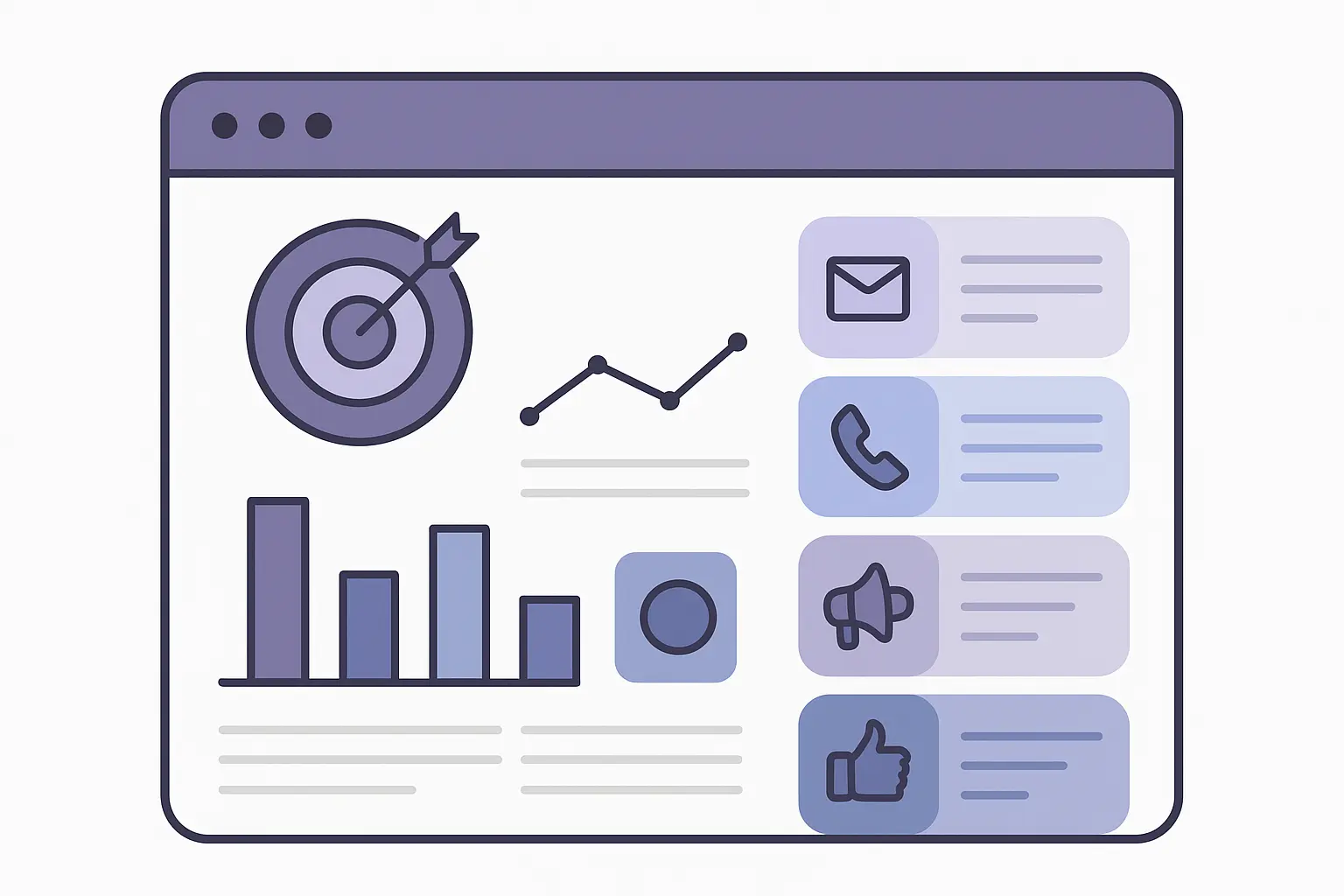
Account research drove everything. They conducted deep dives into organizational structure, pain points, and buying committees for each target account. This intelligence informed content personalization, channel selection, and outreach timing across all touchpoints. Do your homework or go home.
Monthly investment included $25,000 for LinkedIn ads, personalized direct mail packages to 1,200 key contacts, 8-touch email nurturing campaigns per persona, coordinated sales outreach, and dynamic website personalization for target accounts. ABM isn’t cheap, but when it works, the deal sizes justify the investment.
18. Outreach’s Sales Development Playbook
Outreach’s systematic multi-touch sequences with personalized messaging generated a 67% increase in response rates and 145% improvement in qualified opportunities over 6 months. Their approach treated sales development as a science rather than an art, which probably annoyed their more “creative” sales reps.
The playbook included specific templates, timing sequences, and personalization guidelines for different prospect types. Sales development reps followed structured sequences but personalized each touchpoint based on prospect research and previous interactions. Structure with flexibility.
What separated this from typical cold outreach was the integration with marketing efforts. When marketing identified high-intent prospects through website behavior or content engagement, sales received detailed context for their outreach approach. Marketing and sales actually working together – revolutionary.
19. 6sense’s Intent Data Integration
6sense used their own intent data platform to identify and prioritize high-value prospects, resulting in a 200% increase in pipeline velocity and 89% improvement in lead scoring accuracy over 5 months. When you’re selling intent data, you better be good at using it yourself.
Intent data revealed when prospects were actively researching solutions, allowing sales and marketing teams to time their outreach perfectly. Instead of cold outreach, they engaged prospects who were already in buying mode. Timing is everything in sales.
The system tracked digital behavior across multiple touchpoints—website visits, content consumption, search patterns, and competitive research. This intelligence informed both marketing campaigns and sales conversations, creating more relevant and timely interactions.
20. Demandbase’s Personalized Web Experiences
Demandbase’s dynamic website personalization for target accounts achieved a 156% increase in target account conversions and 234% boost in engagement time over 3 months. When visitors from target accounts landed on their website, they saw customized content, case studies from similar companies, and industry-specific messaging.
A manufacturing company executive saw manufacturing case studies and ROI calculators relevant to their industry. The personalization extended beyond surface-level changes. Entire page layouts, navigation elements, and conversion paths adapted based on account characteristics and previous engagement history. It’s like having a website that reads minds.
Partnership & Referral Program Gold Mines
Partnership and referral programs represent some of the highest ROI lead generation strategies when executed properly, but they’re also some of the hardest to get right. Successful programs combine compelling incentive structures, seamless user experiences, sophisticated tracking systems, and strategic partner selection to create sustainable growth engines.
21. Dropbox’s Viral Referral System
Dropbox’s incentivized referral program achieved 3,900% growth in user base with 35% of daily sign-ups coming from referrals over 15 months. This wasn’t just a referral program—it was a growth engine built into the product experience. Easy to replicate, right? Yeah, good luck with that.
The incentive structure benefited both referrers and new users with additional storage space. But the real genius was in the execution: one-click sharing via email, social media, and direct links made referring friends effortless. Friction kills referral programs faster than anything else.

Technical sophistication supported the simplicity. Custom referral tracking attributed multi-level referrals, real-time reward distribution provided instant gratification, and fraud detection prevented abuse. Mobile app integration ensured the referral experience worked seamlessly across all devices.
Gamification elements included progress bars showing referral goals, achievement badges for milestones, and bonus rewards for reaching certain thresholds. These psychological triggers encouraged continued participation beyond the initial referral. Psychology matters in program design.
22. Slack’s Partner Channel Program
Slack developed an ecosystem of integration partners for lead sharing, resulting in 40% of new customers acquired through partner channels over 18 months. Their approach recognized that software buyers often discover solutions through existing tools and relationships, not cold outreach.
Integration partners included project management tools, CRM systems, and productivity apps that complemented Slack’s functionality. When users of these tools needed communication solutions, partners could recommend Slack with confidence. Natural integration beats forced partnerships.
The program provided partners with sales materials, technical support, and revenue sharing arrangements that aligned incentives. Partners weren’t just referring leads—they were actively selling Slack as part of integrated solutions. Alignment creates commitment.
23. Zoom’s Reseller Network Expansion
Zoom’s comprehensive reseller and affiliate program generated a 67% increase in enterprise leads and 145% growth in channel revenue over 12 months. They recognized that enterprise sales often require local relationships and specialized expertise that headquarters can’t provide.
Resellers received extensive training, sales support, and marketing materials to effectively represent Zoom in their markets. The program included different tiers based on sales volume and specialization, with higher tiers receiving better margins and additional support. Performance-based rewards drive results.
Geographic expansion became much easier with local resellers who understood regional business practices, compliance requirements, and customer preferences. This approach accelerated international growth while maintaining service quality.
24. HubSpot’s Agency Partner Program
HubSpot’s certification and referral program for marketing agencies resulted in a 200% increase in partner-sourced leads and 89% improvement in customer retention over 24 months, similar to success patterns we’ve documented in our detailed HubSpot analysis. The program created a win-win-win scenario for HubSpot, agencies, and clients.
Agencies received comprehensive training on inbound marketing methodology, access to HubSpot tools, and ongoing support for client implementations. In return, they recommended HubSpot to clients and provided implementation services. Everyone wins when incentives align properly.
The certification process ensured quality standards while building a network of qualified professionals who could effectively use and recommend HubSpot’s platform. Clients benefited from working with certified experts, agencies gained credibility and new revenue streams, and HubSpot expanded their reach through trusted partners.
25. Canva’s Educational Institution Partnerships
Canva’s partnerships with schools and universities achieved 300% increase in educational sector penetration and 156% boost in long-term user value over 10 months. They recognized that students who learn design tools in school often influence workplace decisions later. Long-term thinking pays off.
The program provided free access to Canva Pro features for educational use, along with curriculum resources and teacher training. Students learned design skills using Canva, creating familiarity and preference that carried into their professional careers.
Educational partnerships also generated immediate value through institutional subscriptions and expanded usage across faculty and staff. The long-term value came from graduates who recommended Canva in their workplaces, creating a pipeline of future enterprise customers. Plant seeds early.
How to Evaluate These Strategies for Your Business
Successful strategy evaluation requires analyzing measurable results, industry relevance, timeline expectations, budget requirements, scalability potential, and market conditions. The best approaches combine multiple evaluation criteria to identify strategies that align with specific business goals, resources, and market positioning. But let’s be honest – most people will just copy whatever sounds coolest.
Choosing the right lead generation strategy isn’t about copying what worked for someone else—it’s about understanding why it worked and whether those conditions exist for your business. This is where most companies screw up royally.
Start with measurable results and ROI analysis. The highest performers in our case studies include HubSpot’s content marketing (15x traffic increase, 100,000+ leads monthly), Salesforce’s LinkedIn campaigns (45% cost reduction, 67% MQL improvement), and Dropbox’s referral program (3,900% user growth). But these numbers only matter if you can achieve similar results in your context.
Look, I made another table because data makes me
Look, I made another table because data makes me happy, but the real lesson here is matching strategy to reality, not wishful thinking:
|
Strategy Type |
Best For |
Timeline |
Budget Range |
Key Success Factors |
|---|---|---|---|---|
|
Content Marketing |
B2B SaaS, Professional Services |
12-24 months |
$10,000-$50,000/month |
SEO expertise, consistent publishing, topic authority |
|
LinkedIn Advertising |
B2B Enterprise, High-value services |
1-3 months |
$5,000-$25,000/month |
Precise targeting, industry knowledge, CRM integration |
|
Email Automation |
All business types |
2-4 months |
$1,000-$10,000/month |
Behavioral tracking, segmentation, personalization |
|
Webinar Programs |
B2B Software, Education |
3-6 months |
$3,000-$15,000/month |
Subject matter expertise, presentation skills, follow-up systems |
|
ABM Campaigns |
Enterprise B2B |
4-8 months |
$15,000-$50,000/month |
Sales alignment, research capabilities, multi-channel coordination |
|
Referral Programs |
Consumer products, SMB tools |
6-12 months |
$2,000-$20,000/month |
Product-market fit, user satisfaction, technical integration |
Industry relevance determines whether strategies will translate to your market. B2B excellence shows up in Terminus’s ABM approach (perfect for enterprise companies), Outreach’s sales development (ideal for complex sales cycles), and 6sense’s intent data (best for high-value transactions). B2C success appears in Dropbox’s referral system (excellent for consumer products), Canva’s partnerships (great for freemium models), and Mailchimp’s Instagram campaigns (perfect for small business targeting).
Timeline expectations vary dramatically across strategies. Quick wins (1-4 months) include LinkedIn ad campaigns, Instagram Stories campaigns, personalized web experiences, and behavioral email triggers. Medium-term strategies (5-8 months) encompass content marketing, webinar series, ABM campaigns, and YouTube thought leadership. Long-term approaches (9-24 months) focus on comprehensive SEO strategies, partner program development, referral system implementation, and agency partnership programs.
Here’s a reality check: A B2B SaaS company with $10,000 monthly budget and 3-month timeline would prioritize LinkedIn advertising (immediate results, precise B2B targeting) combined with email automation (scalable, cost-effective). They’d avoid content marketing (too long-term) and ABM (budget too small) while planning these for future quarters as budget and timeline expand.
Market conditions and timing affect every strategy’s potential success. Pre-2020 approaches have adapted to virtual/hybrid formats, while cold calling now requires more personalization. Post-2020 adaptations include virtual events becoming essential, digital-first ABM gaining prominence, and social selling expanding significantly.
Looking toward 2025, consider AI-powered personalization at scale, privacy-first marketing approaches, multi-generational buyer journey mapping, and sustainable marketing practices. Strategies that align with these trends will likely perform better than those fighting against them.
Budget and Resource Planning Guide
Let’s talk money, because everyone dances around this. Budget requirements for lead generation strategies range from $1,000 monthly for basic automation to $25,000+ for comprehensive programs. Resource planning must account for both upfront investments and ongoing maintenance costs, with different strategies requiring varying levels of team expertise and technology infrastructure.
If you’re reading this thinking “I have $500/month,” then half these strategies are fantasy football for you right now. And that’s totally fine – I’ve been there.
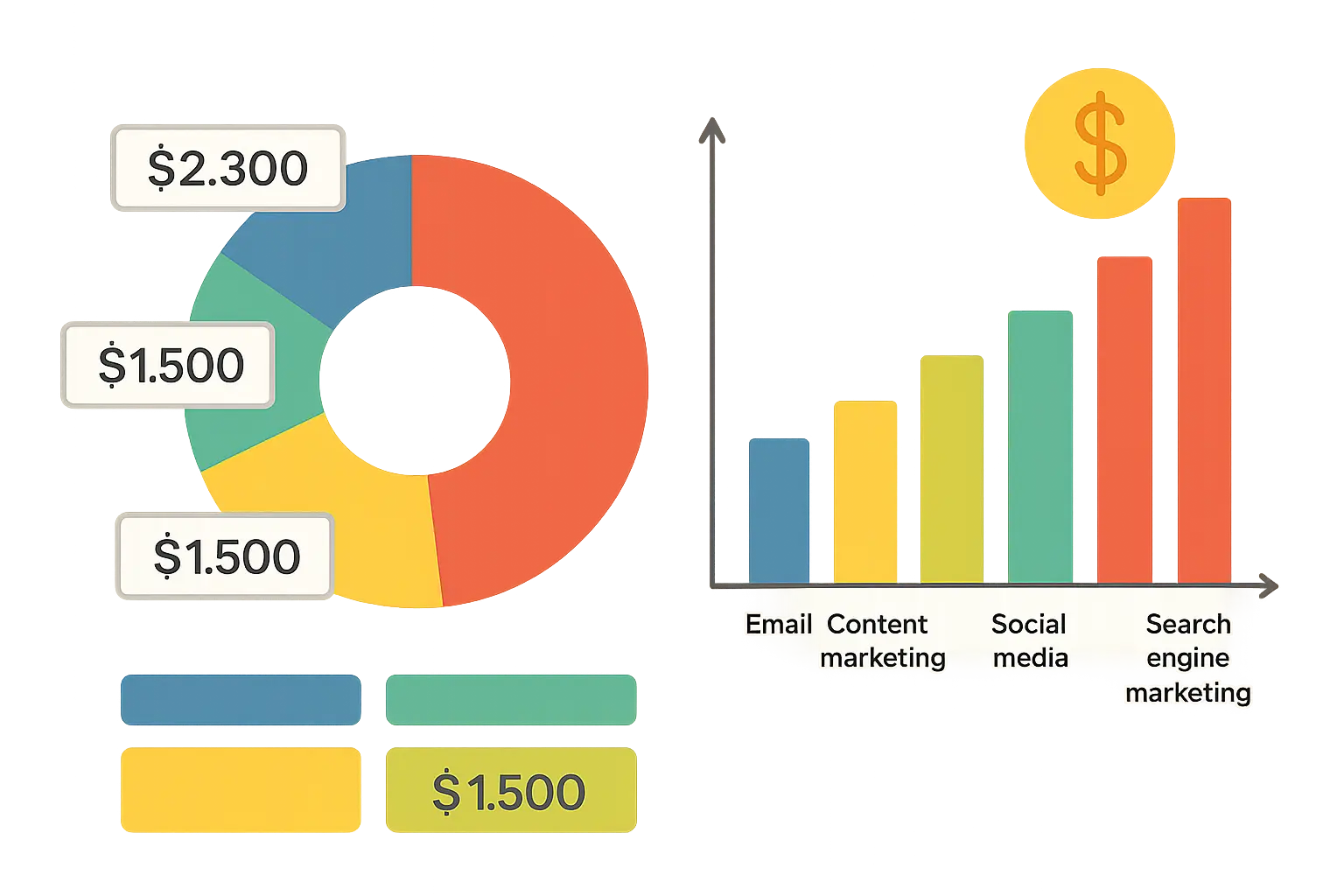
Low investment strategies ($1,000-$5,000 monthly) include email automation campaigns, social media organic strategies, basic content marketing, and simple referral programs. These approaches require more time than money, making them perfect for startups and small businesses with limited budgets but available team capacity.
ActiveCampaign’s behavioral triggers fall into this category—the platform costs are reasonable, but success depends on strategic setup and ongoing optimization. Similarly, organic social media strategies require consistent content creation and community management rather than large advertising budgets.
For businesses looking to maximize their investment, understanding marketing ROI calculations becomes essential when allocating budgets across different lead generation channels and measuring their effectiveness.
Medium investment strategies ($5,000-$25,000 monthly) encompass paid advertising campaigns, professional content creation, webinar series production, and advanced marketing automation. Salesforce’s LinkedIn campaign ($25,000 over three months) demonstrates how focused spending can deliver exceptional results.
Content marketing at HubSpot’s level requires significant investment—$50,000 monthly for their team of 12 writers, 3 editors, and 2 SEO specialists, plus tools and promotion costs. But the long-term ROI justifies the investment for companies with sufficient scale.
High investment strategies ($25,000+ monthly) include comprehensive ABM programs, large-scale content operations, multi-channel campaign coordination, and enterprise partnership development. Marketo’s virtual summit required $350,000 total investment with a 25-person team, but generated $2.3 million in pipeline.
|
Budget Level |
Monthly Range |
Recommended Strategies |
Team Requirements |
Expected Timeline |
|---|---|---|---|---|
|
Startup |
$1,000-$5,000 |
Email automation, organic social, basic content |
1-2 marketing generalists |
3-6 months |
|
Growing |
$5,000-$15,000 |
LinkedIn ads, webinars, content marketing, paid social |
2-4 specialists |
2-4 months |
|
Established |
$15,000-$35,000 |
ABM, comprehensive content, multi-channel campaigns |
5-8 team members |
1-3 months |
|
Enterprise |
$35,000+ |
Full-scale programs, events, partnerships, custom development |
10+ specialists |
Immediate |
Resource requirements extend beyond budget to include team expertise, technology infrastructure, and ongoing management capacity. Email automation needs marketing technologists who understand complex workflows and segmentation logic. Content marketing requires writers, editors, SEO specialists, and project managers. ABM demands coordination between marketing, sales, and customer success teams.
Tool and technology costs add up quickly. Marketing automation platforms, CRM systems, analytics tools, content management systems, and specialized software for different channels can easily consume $2,000-$10,000 monthly before you factor in team costs and advertising spend.
Timeline Expectations and Scalability Factors
Lead generation timelines vary from 30-day quick wins to 24-month long-term strategies, with scalability depending on automation potential, resource requirements, and market dynamics. Understanding these factors helps set realistic expectations and choose strategies that align with business growth plans. Most people quit right before things start working.
Timeline management makes or breaks lead generation success. Unrealistic expectations lead to premature strategy abandonment, while overly conservative timelines miss market opportunities.
Quick wins (30-90 days) provide immediate momentum and cash flow. LinkedIn advertising campaigns can show results within weeks once targeting and creative are optimized. Behavioral email triggers start improving conversion rates as soon as they’re implemented. Instagram Stories campaigns can boost trial sign-ups within the first month.
But quick wins often require existing infrastructure. Salesforce’s LinkedIn success built on their established brand recognition, existing content library, and sophisticated CRM system. Without these foundations, implementation takes longer.
Medium-term strategies (3-8 months) balance speed with sustainability. Content marketing begins showing SEO results after 3-4 months of consistent publishing, but reaches full potential over 12-18 months. Webinar series need time to build audience and refine content, but can generate consistent leads once established.
Zoom’s YouTube strategy took 8 months to achieve 89% demo increase and 234% subscriber growth. The timeline reflected content creation, audience building, and algorithm optimization—processes that can’t be rushed without sacrificing quality.
Long-term strategies (9-24 months) create sustainable competitive advantages. HubSpot’s content marketing transformation required 24 months to reach 100,000+ monthly leads, but created a lead generation engine that continues performing years later. Partner programs need time to recruit, train, and activate partners before generating significant lead volume.
Scalability assessment determines whether strategies grow with your business. Highly scalable approaches include marketing automation systems (better performance with more data), referral programs (network effects increase effectiveness), content marketing strategies (existing content continues generating leads), and partner networks (more partners expand reach).
Moderately scalable strategies include paid advertising campaigns (costs increase with scale), webinar programs (require more resources for larger audiences), social media strategies (need more content and community management), and email marketing (list growth requires ongoing lead generation).
Limited scalability affects direct outreach campaigns (personal touch becomes difficult at scale), personalized ABM approaches (customization requirements limit volume), event-based strategies (physical or time constraints), and one-on-one relationship building (doesn’t scale by definition).

The most successful companies combine strategies across different scalability levels—using limited scalability approaches to land high-value accounts while building highly scalable systems for volume lead generation.
How The Marketing Agency Can Transform Your Lead Generation Results
Full disclosure – I work with The Marketing Agency, so take this with a grain of salt. But honestly? Most agencies I’ve worked with just throw spaghetti at the wall. These guys actually seem to know what they’re doing, which is refreshing.
After analyzing these 25 case studies, one pattern emerges clearly: success requires both strategic thinking and flawless tactical execution. Most lead generation failures happen because companies either choose the wrong strategy for their situation or execute the right strategy poorly.
The Marketing Agency’s scientific approach to market analysis prevents the “spray and pray” mentality that causes many campaigns to fail. Instead of guessing which channels might work, they identify the gaps that most agencies miss through comprehensive data analysis and market research.
Their integrated service offerings—PPC ($750-$5,000 monthly), Email Marketing ($1,200-$10,000 monthly), and Inbound Marketing ($500-$3,000 monthly)—allow for the multi-channel approaches that delivered the best results in our case studies. HubSpot’s success combined content marketing, email automation, and conversion optimization. Salesforce coordinated LinkedIn ads with CRM integration and sales follow-up.
The performance focus ensures continuous optimization rather than “set and forget” campaign management. ActiveCampaign’s 320% efficiency improvement came from ongoing refinement of behavioral triggers and scoring models. Terminus’s 450% engagement increase required constant testing and adjustment of messaging across multiple channels.
Budget optimization becomes possible with transparent pricing that allows strategic allocation across multiple lead generation channels. Instead of putting all resources into one approach, you can test and scale the combinations that work best for your specific market and business model.
Ready to implement proven lead generation strategies that actually deliver results? The Marketing Agency’s data-driven approach can help you avoid the common pitfalls and replicate the success patterns we’ve identified in these case studies.
Final Thoughts
Look, if you made it this far, you’re probably serious about fixing your lead gen. Lead generation success in 2025 requires sophisticated integration of multiple channels, advanced attribution modeling, and continuous optimization based on performance data. The most effective strategies combine proven tactics with strategic thinking, realistic timeline expectations, and sufficient resource allocation to achieve sustainable results.
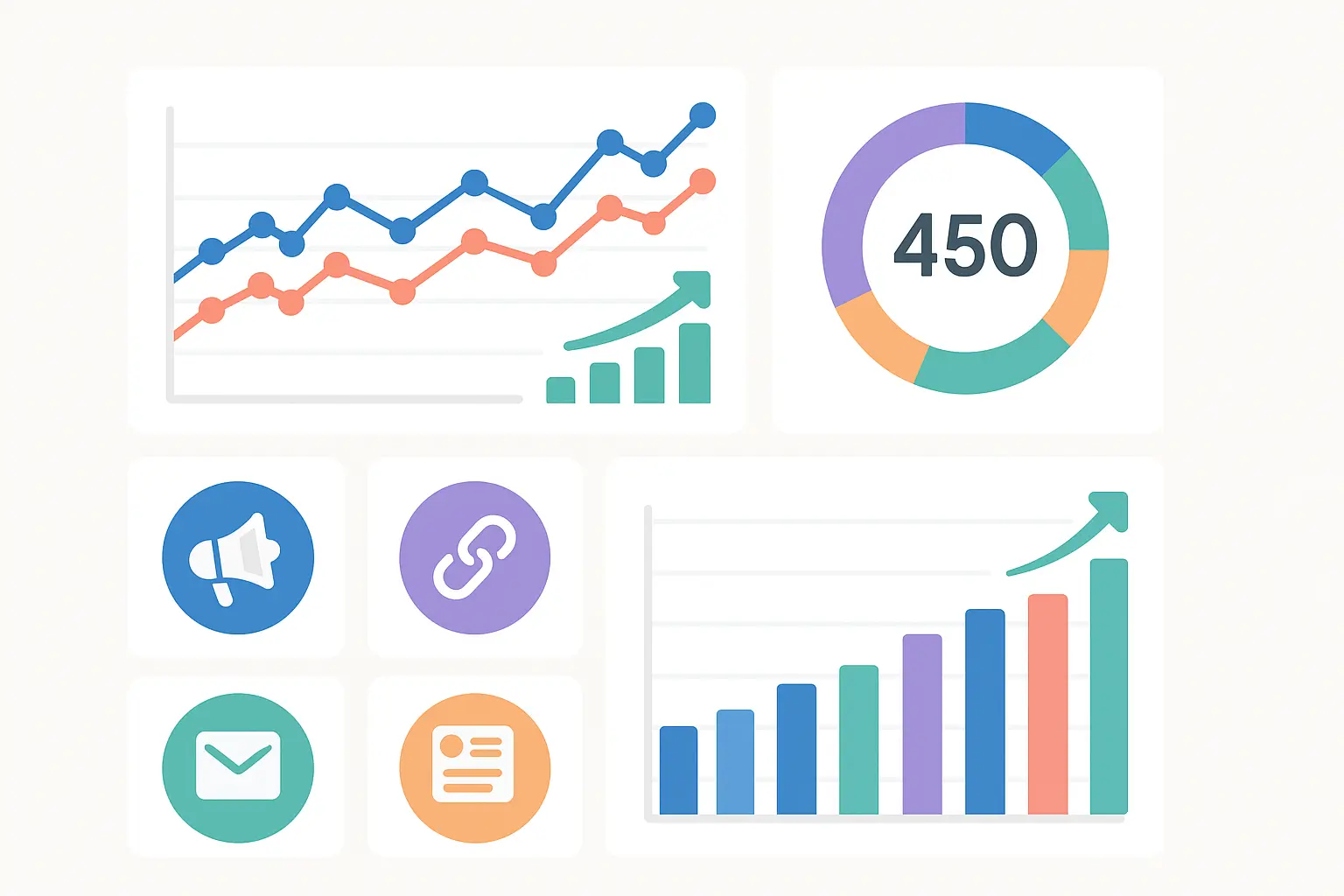
These 25 case studies prove that lead generation success isn’t about finding one magic strategy—it’s about understanding your market, choosing appropriate tactics, and executing them with precision and persistence. I’ve seen companies completely nail this stuff, and I’ve seen others crash and burn spectacularly.
The highest-performing companies consistently combined multiple approaches rather than relying on single channels. HubSpot integrated content marketing with email automation and conversion optimization. Salesforce coordinated LinkedIn advertising with CRM systems and sales processes. Dropbox built referral mechanics directly into their product experience.
What separates winners from losers isn’t access to secret strategies—it’s the discipline to measure results accurately, optimize continuously, and maintain consistent execution over time. The companies that achieved 300%+ improvements didn’t get lucky; they followed systematic approaches and stuck with them long enough to see results.
Your lead generation success will depend on matching proven strategies to your specific situation, allocating sufficient resources for proper implementation, and maintaining realistic timeline expectations. The case studies provide the roadmap, but execution determines whether you’ll join the ranks of companies achieving exceptional results.
Start with whatever you can afford and just be consistent about it. That beats perfect strategy that never gets implemented.




